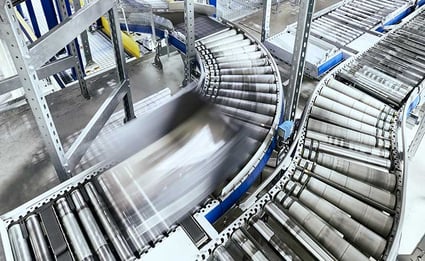More SKUs, More Complexity: How Digitalization Can Help Tame the Beast
Nancy Sarpolis - December 14, 2021

SKU proliferation impacts nearly all industries as companies try to attract a greater share of consumer dollars with ever-more enticing products. E-commerce is also driving the increase in SKUs for retailers who now have to offer consumer packaging that’s different, such as a product packaged for shipping versus displaying on a grocery store shelf. Add to that the growing demand for personalization and supply chains are faced with longer production runs, more changeovers, rising warehouse costs and less accurate forecasts.
What’s an already-busy supply chain manager to do?
Understand your own organization
Managing the complexity of an ever-increasing number of SKUs starts with a deep understanding of your own organization. Start with process mapping to better understand just how long each stage of production actually takes, from the length of time involved in moving raw goods from inventory onto the production floor to getting finished products off the production line to filling containers or trucks for shipping. By gaining this level of insight into and control over your own operations, you can be sure that you’re not overextending (or underutilizing) your capacity and avoid putting yourself in a position where on-time deliveries become impossible.
Scrap the spreadsheets
The days of building massive spreadsheets to plot potential production and logistics plans are over. Managing a logistics network in the face of a growing number of SKUs is virtually impossible to achieve with the manual input and human intervention needed for effective spreadsheet use. Today’s supply chain managers also have less time available to make informed decisions and need the ability to rapidly pivot as unexpected situations arise, such as:
-
Keeping operations running when a machine breaks down
-
Maximizing productivity when parts or raw materials arrive late or are backordered
-
Determining which production line—or plant facility—would be the most efficient for completing a particular order
-
Rerouting work when inclement weather or power outages take down a shift or plant
Tasks such as these are becoming more difficult without advanced analytics. They require real-time tracking capabilities, end-to-end visibility through integration with suppliers and logistics providers, plus powerful digital tools that can help analyze data and information more quickly than a human planner with a spreadsheet could possibly do.
Get the right data
Given the increasing complexity of today’s digital supply chain, companies that want to stay competitive need systems that will give them end-to-end visibility into their own value chains. The more data you have, the more successfully you can analyze your best options and make sound decisions. It’s this visibility that provides the foundation for the powerful analytics necessary to generate the most accurate sales and operations planning process ever possible. Start with the foundational segments of your value chain: production, inventory, and logistics and include stakeholders from each stage. This ensures that there will be no surprises such as late deliveries, lost products, or even damaged goods and allows you to monitor situations in real-time.
Having the right data in real-time is critical for managing the complexity and demands of today’s supply chain. Digitalization puts the power in supply chain manager’s hands—no matter how many SKUs there are.
If you want to learn more get your Guide to Transformation of Manufacturing Processes
In this Guide you will learn:
-
Emerging challenges in the modern automotive industry
-
How global OEMs can adapt to new realities
-
How decentralized digital systems power smarter planning processes
-
How flexis can support flexible supply chain transformation
LATEST POSTS
- Understand Why Production Planning Needs Specialized Solutions
- Understand Circular Economy in The Manufacturing Industry
- How Can Industry 4.0 IT Integration Be Achieved Smoothly?
- The Significance of Order Sequencing in Discrete Manufacturing
- How to improve your Supply Chain Management: The Power of Control Towers



